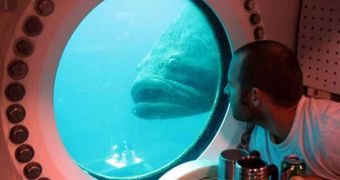Three miles off the coast of Florida, the Atlantic Ocean is home to the only underwater research laboratory and habitat in the world. Researchers here, called aquanauts, spend a lot of time submerged, studying marine life in the area.
The lab is in effect a metal tube affixed to the ocean floor, which is about the size of a school bus. The goal of the initiative is studying and monitoring sponges in the Conch Reef, OurAmazingPlanet reports.
Sponges have become a prime target of research around the world, given that they are the main contender to occupying the space freed by dying corals. Around the world, the two types of organisms are locked in a battle for supremacy.
Sponges live on the bottom of the ocean, and they are categorized as filter feeders. This means that they pass water through specialized structures, which retain nutrients. The water is then released.
Around Florida, the corals are all but extinct. Over the past few years, more than 90 percent of all reefs have been destroyed, most of them by oceanic acidification and pollution.
In their place, sponges and various species of algae run a battle for supremacy, and the organism that emerges victorious could change the ocean forever. This is why researchers keep such a close eye on the situation.
University of North Carolina Wilmington associate professor Chris Finelli is part of the expedition that is now occupying the Aquarius Reef Base. The structure is submerged 50 feet under water.
"If you can't have corals, better that you should have sponges, rather than macroalgae,” UNCW professor Joseph Pawlik says. Finelli agrees, saying that algae do not improve water quality around them, as sponges do.
Over the past few months, the research team working underwater saw an increase in the number of baby sponges on the ocean floor.
Despite all this, the group is not yet convinced that the sponge population is in effect growing, or whether it's capable of defeating algae or not.
“The interesting thing is we've also seen diseases take out some of the largest individuals on the reef,” explains Pawlik.
For now, work will continue underwater, as researchers keep a close eye on how things are evolving.

 14 DAY TRIAL //
14 DAY TRIAL //